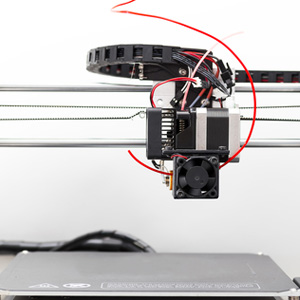The highly disruptive and rapidly growing additive manufacturing technology (AMT) promises a revolutionary change, not only in the large manufacturing industries, but also through average consumers. In addition to an economical alternative to traditional manufacturing, the 3D printing industry also provides the benefits of incorporating high levels of customization and complexity of design, as well as much lower lead times. This phenomenon of 3D printing, which until recently was mainly used for rapid prototyping, is now also increasingly being used in the production of end-parts and finished components in a wide range of applications, such as the automotive, aerospace, machine tools, electronics, medical, pharmaceuticals, and food industries.
3D printing has given rise to a rapidly growing multi-billion-dollar global market, offering highly profitable opportunities to companies along its supply chain. This industry is, especially, a new and fast-growing market avenue for global chemical producers: suppliers of polymers, materials, and specialty chemicals, who can best benefit by identifying the right opportunities.
The global 3D printing market, including 3D printing systems, materials, and services, is estimated to be worth roughly USD 8 billion in 2017, with the global market of 3D printing materials being around USD 700 million. Geographically, North America and Europe together account for around two-thirds of the 3D printing global market revenues, and Asia Pacific accounts for over one-fourth. Asia-Pacific, mainly China and Japan, are expected to be the fastest-growing markets.
More than a dozen technologies for 3D printing are in use currently, ranging from stereolithography, material jetting, selective laser sintering, binder jetting, and fused deposition modelling to laminated object manufacturing, nanoparticle jetting, and direct metal laser sintering. Comparative assessment of each of these technologies as relative growth markets for printing materials is essential for material suppliers to target customers effectively.
A variety of 3D printing materials are in use, ranging from photopolymers, thermoplastics, metals, ceramic to nanoparticles and biomaterials. The largest share is held by photopolymers currently, while the fastest growth will be seen in metals as metal printing moves from just products of precious metals and alloys into serial production of mechanical and plant engineering products.
The automotive, aerospace, defense, consumer electronics, and healthcare sectors are expected to witness spurring growth in the implementation of additive manufacturing technologies. Even more interesting is the surge in the DIY 3D printing market, not only for home printing by consumers, but also on open source web stores offering highest level of design customization. This consumer DIY segment brings immense potential as it allows the design and technology to be influenced by an increasing number of creative individuals from outside of the production process.
The global 3D printing industry is set to grow at well above 20% annually in the next 10 years. The future holds continued advancements in technologies and manufacturing processes of 3D printing, which will in turn invoke continued development in material engineering, enabling improved and even novel materials for additive manufacturing.
In order to draw maximum benefit of this explosive phenomenon of 3D printing, material suppliers not only need an impeccable understanding of the supply chain, but also should be vigilant of its potential challenges, such as the long time needed in R&D for material development. An advanced understanding of the developments in printers and printing technologies, including their patent scenario and IP white space, in addition to identifying the key R&D areas, can remarkably enable material suppliers to create their best positioning.
Kline’s new study on The Additive Manufacturing Industry: Opportunities in 3D Printing Chemicals Market will provide a comprehensive understanding and assessment of the current scenario and the future of the 3D printing industry as a fast-emerging chemicals marketplace. This study aims to be a powerful tool for companies supplying technologies and materials into the 3D printing market. It helps identify the best opportunities, manage the changes that will inevitably occur in their supply chains, and to design optimal business strategies to ensure profitable growth in the 3D printing chemicals sector.

